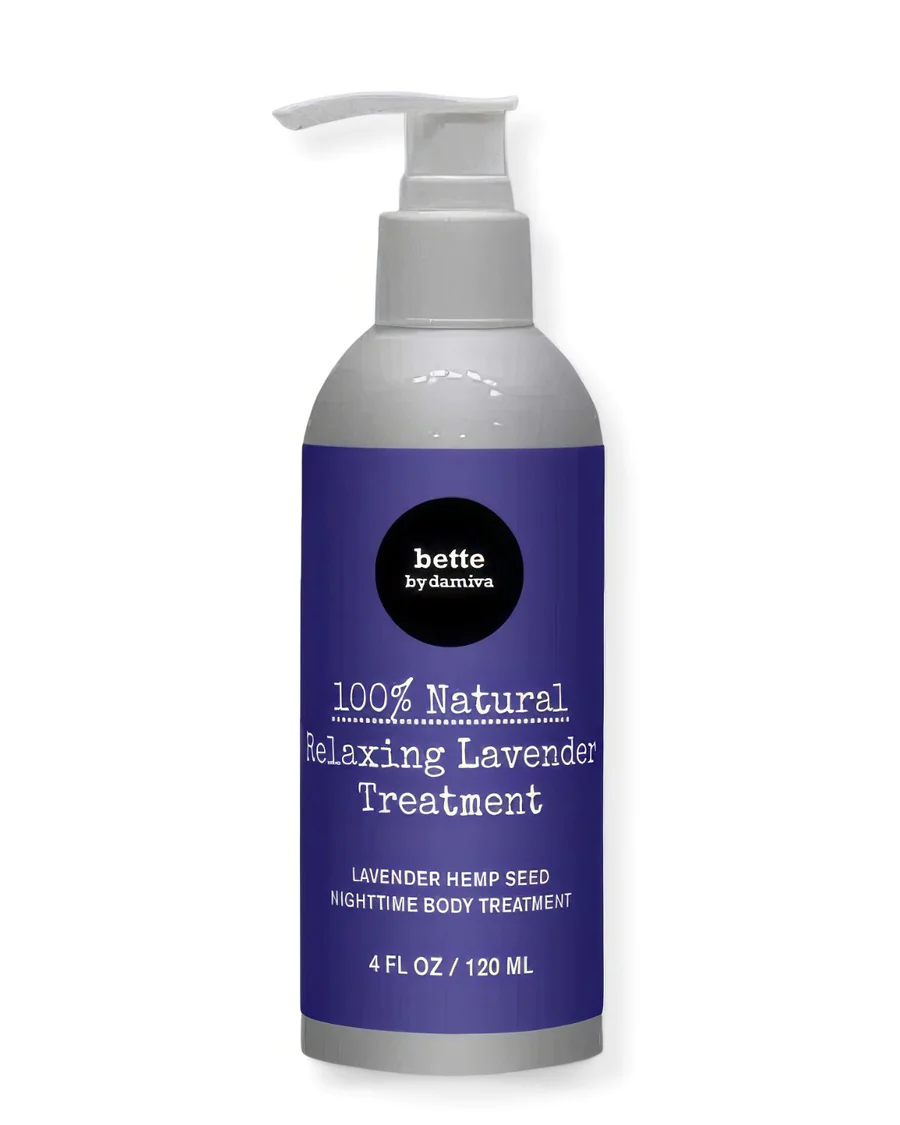Understanding the Feeling of Disconnection
Have you ever felt a sense of disconnection from those around you, or even from yourself? This feeling can manifest as a lack of interest in social interactions, a preference for solitude, or a general sense of detachment from the warmth and bond of relationships. It’s not uncommon to experience such feelings, and they can be particularly distressing when they persist despite our best efforts to overcome them. The root of this disconnection may not be a simple matter of willpower or choice; it could be deeply embedded in our biology.
The Role of Stress and Energy Levels
Stress is an inevitable part of life, but when it becomes chronic, it can deplete our energy reserves and throw our internal balance off kilter. The hormone cortisol, often referred to as the “stress hormone,” plays a crucial role in our body’s response to stress. It’s designed to help us in times of danger, but when its levels remain high for extended periods, it can lead to a host of issues, including rapid aging, loneliness, depression, and burnout. These conditions can make it easier for us to disconnect and detach from others and ourselves.
The Biological Basis of Social Behavior
On the flip side of cortisol is oxytocin, sometimes called the “love hormone.” Oxytocin is associated with bonding, connection, and social interactions. It is released during moments that bring us closer to others, such as childbirth, physical intimacy, laughter, and acts of kindness. However, cortisol and oxytocin have a complex relationship; they often work in opposition to each other. When one rises, the other tends to fall. This delicate balance between cortisol and oxytocin is key to our social behavior and overall well-being. Disruptions in this balance may lead to the feelings of disconnection many of us experience.
Cortisol: The Stress Hormone Explained
Functions and Effects of Cortisol
Cortisol, commonly known as the “stress hormone,” is produced in the adrenal glands and plays a crucial role in the regulation of various physiological processes. Its primary function is to respond to stress by increasing glucose in the bloodstream, enhancing the brain’s use of glucose, and increasing the availability of substances that repair tissues. Cortisol also curbs functions that would be nonessential or detrimental in a fight-or-flight situation, such as altering immune system responses and suppressing the digestive system, the reproductive system, and growth processes.
Consequences of Chronic High Cortisol
While cortisol is vital for survival, its chronic elevation can lead to a plethora of health issues. Prolonged stress and subsequent high cortisol levels can contribute to weight gain, high blood pressure, disrupted sleep, negative mood, and reduced energy levels. Chronic high cortisol can also impair cognitive performance, suppress thyroid function, and increase abdominal fat, which is associated with more health problems than fat deposited in other areas of the body. These effects collectively contribute to the increased risk of various health conditions, including heart disease, depression, and mental illness.
Cortisol’s Impact on Inflammation and Aging
Cortisol has a complex relationship with inflammation. In the short term, it serves as an anti-inflammatory agent. However, when cortisol levels remain persistently high, the body’s inflammatory response is altered, leading to increased susceptibility to inflammation and related diseases. This chronic inflammation is a key contributor to the aging process and is implicated in the development of age-related diseases. High cortisol levels can accelerate the aging process by shortening the length of telomeres, protective caps on the ends of chromosomes, which are a biomarker of aging and overall health.
Furthermore, the imbalance of cortisol can affect the balance of other hormones, including oxytocin, known as the “love hormone,” which is crucial for social bonding and stress reduction. The interplay between cortisol and oxytocin is significant, as high levels of cortisol can suppress oxytocin release, leading to feelings of disconnection and loneliness, which may further exacerbate stress and aging.
In conclusion, maintaining balanced cortisol levels is essential for health and well-being. Strategies to manage stress, such as regular physical activity, mindfulness, and adequate sleep, can help regulate cortisol production and mitigate its potential negative effects on inflammation and aging.
Oxytocin: The Hormone of Connection
The Positive Effects of Oxytocin
Oxytocin, often dubbed the “love hormone,” plays a crucial role in fostering connections and promoting feelings of closeness and bonding. This remarkable hormone is released in response to various stimuli, including touch, warmth, and affectionate interactions. Its positive effects are manifold, encompassing emotional, psychological, and physical benefits. Oxytocin helps to reduce stress and anxiety by counteracting the effects of cortisol, the stress hormone. It enhances trust and empathy, making it easier for individuals to form and maintain social bonds. Moreover, oxytocin has been linked to increased generosity and a heightened sense of altruism, reinforcing its role in social cohesion and cooperation.
Oxytocin in Relationships and Social Bonds
In the context of relationships, oxytocin is a key player in the development and maintenance of social bonds. It is released in abundance during intimate moments, such as childbirth, breastfeeding, and sexual activity, cementing the bond between mothers and their children, as well as between romantic partners. The presence of oxytocin fosters a sense of security and attachment, encouraging the formation of lasting relationships. It is not limited to romantic connections; oxytocin also strengthens friendships and family ties, promoting group cohesion and social support networks.
The Anti-Aging Benefits of Oxytocin
Beyond its social implications, oxytocin may also have anti-aging properties. Chronic stress, often accompanied by elevated cortisol levels, can accelerate the aging process. Oxytocin, by mitigating stress responses and promoting positive social interactions, can help to reduce the physiological impacts of stress. This includes lowering blood pressure and improving heart health, which are vital for longevity. Additionally, the hormone’s potential role in reducing inflammation could further contribute to slowing down the aging process, making oxytocin a valuable ally in the pursuit of a healthier, more connected life.
In conclusion, oxytocin’s influence extends far beyond its role in childbirth and lactation. It is a powerful hormone that fosters connection, trust, and well-being, while also offering potential anti-aging benefits. By understanding and harnessing the positive effects of oxytocin, individuals can work towards achieving a more connected and fulfilling life.

Bette 100% All-Natural Relaxing Lavender Body Lotion.
Chemical-Free
Your relaxing night time body moisturizer to leave the day’s stress behind. Decompress and wish your body good night with the calming scent of lavender.
The Seesaw Effect: Balancing Cortisol and Oxytocin
The Interplay Between Cortisol and Oxytocin
Imagine a seesaw on a playground: when one side goes up, the other must come down. This is a fitting metaphor for the relationship between cortisol, the stress hormone, and oxytocin, the hormone of connection. Cortisol is released in response to stress, preparing the body for a fight-or-flight reaction. It diverts resources away from non-essential functions like digestion and reproduction, and can suppress the immune system when levels remain high over time. Oxytocin, on the other hand, is released during positive social interactions such as hugging, laughing, and bonding. It fosters feelings of trust, empathy, and connection. When oxytocin levels rise, cortisol levels tend to fall, and vice versa. This delicate balance between the two hormones is crucial for our well-being.
Strategies for Hormonal Balance
To maintain a healthy equilibrium between cortisol and oxytocin, consider the following strategies:
- Stress Management: Engage in regular stress-reducing activities like meditation, deep breathing exercises, or yoga. These practices can lower cortisol levels and enhance your sense of calm.
- Positive Social Interactions: Prioritize time with loved ones and engage in activities that promote laughter and joy. These interactions can boost oxytocin and counteract the effects of cortisol.
- Physical Touch: Embrace the power of touch through hugs, massages, or even petting an animal to stimulate oxytocin release.
- Healthy Lifestyle Choices: Ensure adequate sleep, a balanced diet, and regular exercise, all of which can help regulate cortisol and support overall hormonal health.
Real-life Implications of Hormonal Imbalance
The tug-of-war between cortisol and oxytocin has real-life implications. Chronic stress and high cortisol levels can lead to a host of issues, including anxiety, depression, and a weakened immune system. It can also cause us to withdraw from social interactions, deepening feelings of isolation and disconnection. Conversely, nurturing our capacity for oxytocin release can enhance our relationships, improve our mood, and even bolster our immune system. Recognizing the signs of hormonal imbalance and taking proactive steps to manage stress and foster positive connections can help tip the scales towards a more harmonious and connected life.
In conclusion, understanding and managing the interplay between cortisol and oxytocin is essential for maintaining emotional and physical health. By implementing strategies for hormonal balance and being mindful of the real-life implications of hormonal imbalance, we can support our well-being and nurture our connections with others. Remember, the goal is not to eliminate stress entirely but to find ways to balance it with the warmth and connection that oxytocin brings into our lives.

From unhappy, dry, and sandpaper to silky, smooth and feeling good. That’s Cleo. Cleo is a 100% natural labial balm to moisture and soothe “your other lips”. Cleo is chemical-free, water-free, pH optimized and helps maintain and restore your delicate labial skin’s natural flora. Ideal for daily use or as needed. Get the most silky, lovable lips ever.
Personal Insights and Transformative Discoveries
A Personal Journey Through Loss and Healing
Embarking on a journey through loss and healing can be one of the most challenging yet transformative experiences in life. For many, including myself, it is a path that uncovers the deep-seated interplay between our physiological responses and our emotional well-being. The loss of a loved one, a relationship, or a sense of self can trigger a cascade of hormonal responses that profoundly affect our capacity to connect with others and even our own selves.
The Cortisol-Oxytocin Disconnect in Personal Trauma
In the throes of personal trauma, the delicate balance between cortisol, the stress hormone, and oxytocin, the hormone of connection, becomes disrupted. Cortisol surges as part of the body’s fight-or-flight response, while oxytocin levels may plummet, leading to a sense of disconnection. This hormonal tug-of-war is not just a metaphor but a biological reality that can cause us to retreat inward and build walls where bridges once existed. The cortisol-oxytocin disconnect is a silent battle, often invisible to the outside world, yet it can leave us feeling isolated and detached in a sea of people.
Reconnecting with Self and Others Post-Trauma
Healing from trauma and restoring the cortisol-oxytocin balance is a process that requires intention and time. Reconnection begins within, as we learn to listen to our bodies and understand the signals they send us. Practices such as mindfulness, deep breathing, and self-compassion can be powerful tools in re-establishing the inner harmony that fosters connection. As we heal, the walls we built begin to crumble, allowing us to reach out and rebuild relationships with others. The warmth of a hug, the joy of shared laughter, and the comfort of being present with another person become not just acts of social engagement but acts of personal restoration.
Through my own journey of loss, I have discovered that the path to reconnection is paved with patience and self-love. It is a journey that has led me to a deeper understanding of the intricate dance between cortisol and oxytocin, and the profound impact this dance has on our ability to connect. As we navigate the waters of healing, we learn that every step towards reconnection is a step towards reclaiming the joy and love that trauma tried to steal away.
Practical Ways to Increase Oxytocin Levels
Daily Activities to Boost Oxytocin
Integrating simple, daily activities into your routine can significantly boost oxytocin levels, enhancing feelings of connection and well-being. Engaging in physical touch, such as hugging loved ones or petting animals, can trigger oxytocin release. Sharing moments of laughter, participating in group activities, and offering acts of kindness are also powerful oxytocin stimulators. Even enjoying a warm meal with friends or family can contribute to increased levels of this hormone.
Managing Stress for Better Hormonal Health
Stress management is crucial for maintaining a healthy balance between cortisol and oxytocin. Practices such as mindfulness meditation, deep breathing exercises, and yoga can lower stress levels, thereby allowing oxytocin to flourish. Adequate sleep and a balanced diet rich in nutrients that support oxytocin production, like vitamin C and magnesium, are also essential. Reducing caffeine and alcohol intake can further help in managing cortisol levels.
The Importance of Mindfulness and Presence
Mindfulness and being present in the moment are key to fostering an environment where oxytocin can thrive. Mindful practices encourage a state of calm and contentment, reducing the fight-or-flight response and promoting the release of oxytocin. Activities such as mindful walking, attentive listening, and conscious breathing can help cultivate presence, enhancing your ability to connect with others and yourself on a deeper level.
By incorporating these strategies into your life, you can harness the power of oxytocin to create stronger bonds, improve emotional health, and lead a more connected and joyful life.
Conclusion: Embracing the Power of Hormones for a Connected Life
Summarizing the Cortisol-Oxytocin Balance
The intricate dance between cortisol and oxytocin within our bodies plays a pivotal role in our sense of connection and well-being. Cortisol, often dubbed the “stress hormone,” is associated with the fight-or-flight response and can lead to feelings of anxiety and isolation when levels are chronically elevated. In contrast, oxytocin, known as the “love hormone,” fosters feelings of trust, bonding, and emotional warmth. The balance between these two hormones is crucial; high cortisol can suppress oxytocin release, tipping the scales towards disconnection and loneliness. Conversely, nurturing behaviors that stimulate oxytocin can dampen cortisol’s effects, promoting a sense of closeness and calm.
Final Thoughts on Hormonal Harmony
Achieving hormonal harmony is akin to finding the right melody in a complex symphony. It requires awareness and sometimes, intentional actions to ensure that our physiological responses do not lead us into a spiral of disconnection. By understanding the cortisol-oxytocin seesaw, we can better navigate our social world and take steps to foster relationships that enrich our lives. It is not merely about reducing stress or seeking pleasurable experiences but about creating a sustainable environment where our hormonal responses support our innate need for connection.
Encouragement for Continued Personal Growth
Understanding the cortisol-oxytocin connection is just the beginning. We must actively engage in practices that promote oxytocin release and manage cortisol levels. This could involve nurturing physical touch, engaging in meaningful social interactions, practicing empathy, and even simple acts like sharing a meal with loved ones. Personal growth involves recognizing when we might be succumbing to the isolating effects of cortisol and consciously choosing behaviors that tilt the balance towards oxytocin and connection. As we continue on this journey, let us embrace the power of our hormones to lead a more connected, fulfilling life.





















